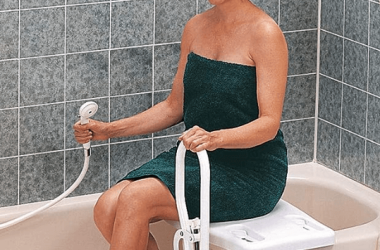Categorized as a bed standing aid, the rope ladder is one of the most affordable and easy to use device that can help one to get up from bed easily by allowing them to pull themselves into a sitting position.
In this article, we’ll focus on rope ladders, and discuss the type of support they provide and who they’re designed for. We’ll guide you through the selection process and, finally, give you an overview of the three best options currently available in the market.
In this article, we’ll focus on how bed rope ladders work, how seniors might benefit from using it, and what factors to consider when choosing the right ladder.
Who can use Bed Rope Ladder :

It’s designed to help individuals get in and out of bed without assistance. By easily pulling up the ladder, users can adjust themselves to a comfortable sitting or standing position.
It is particularly good for seniors who may lack the strength to get up on their own. It’s also excellent for pregnants who require additional support when rising from bed and and those recovering from surgery during the healing period.
To use it, one should loop the ladder strap around the bed frame at the foot of the bed and adjust the strap so that the top handle meets the waist level when lying down.
How to Select a Rope Ladder:
To select a good Bed Ladder you have to pay attention to several unique characteristics that contribute to its safety and usability. Here are key aspects to consider:
1. Material: Look for durable materials like nylon or polyester that can withstand constant use. Avoid materials that fray easily, such as thin or low-quality fibers.
2. Loops Characteristics: Consider the design and construction of the loops, they should be sturdy and easy to grip, without sharp edges or rough surfaces that might cause discomfort.
3. Elasticity: The bed ladder should not be elastic in order to stay in position and hold when needed.
4. Length: Choose a length that suits the bed and the reach of the user, it should help for an easy grasping of the rungs without overstretching.
5. Pressure Support: Select a ladder that can support strong pressure, ensuring that it won’t snap or come loose under the weight and force exerted by the user.
Examples of Commonly Used Bed Rope Ladders:
1. Bed Ladder with Soft Grip Handles

This type of bed ladder typically includes comfortable foam handles for ease of grip and a strong, adjustable ladder design. It is often used by those recovering from surgery, expectant mothers, and of course seniors with lower body weakness.
Many options have durable webbing that can support substantial weight and are easy to clean.
2. Textured Bed Rope Ladder

Some bed rope ladders feature close-set rungs with textured surfaces for a better and more secure grip. This design is particularly beneficial for individuals with limited hand strength, who can not firm well and get reliable hold. The rope length is also adjustable, making it suitable for different bed sizes.
3. Cushioned Bed Pull-Up Ladder

Another popular type includes cushioned hand grips that are more comfortable and allow users to rise at their own pace, typically using machine-washable webbing for easy cleaning. This ladder also attaches to the foot of the bed and provides stable support for users with muscle weakness.
Wrapping It All:
This article has taken you through the essential considerations in selecting the right bed rope ladder, focusing on material, elasticity, length, and pressure support.
For other bed assisting devices, you may need to check the option of a leg lifter, thigh lifter,bed rails or simply a standing cane to help standing.
All depends on the level of the need and the confort of the use of one or other device.

A seasoned SEO specialist and a writer for gaming, senior well-being, and ride-on toys. With an analytical mind, sharpened by 14 years of experience as a finance controller. His unique ability to create engaging content is only exceeded by his skill in leveraging SEO strategies, a talent driven by his love for numbers and patterns.








